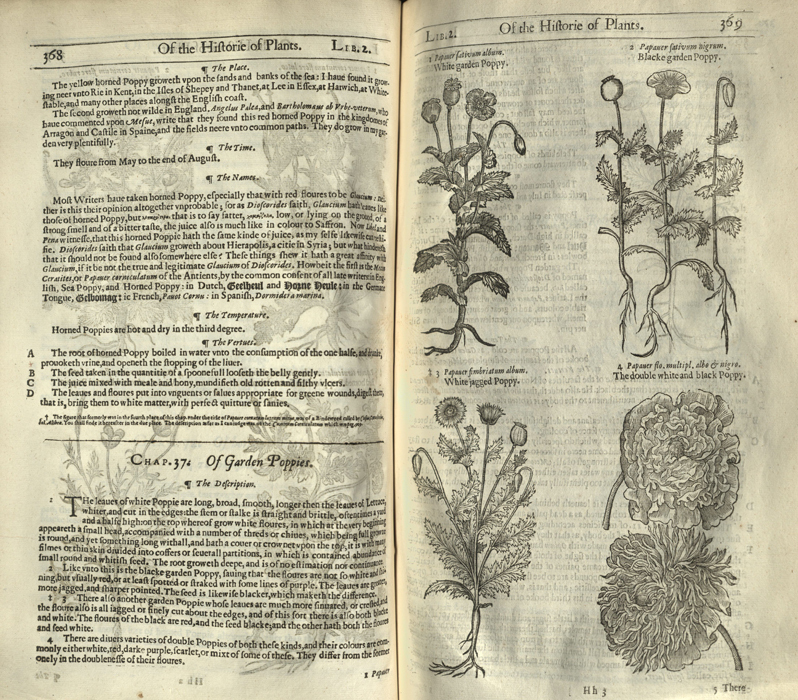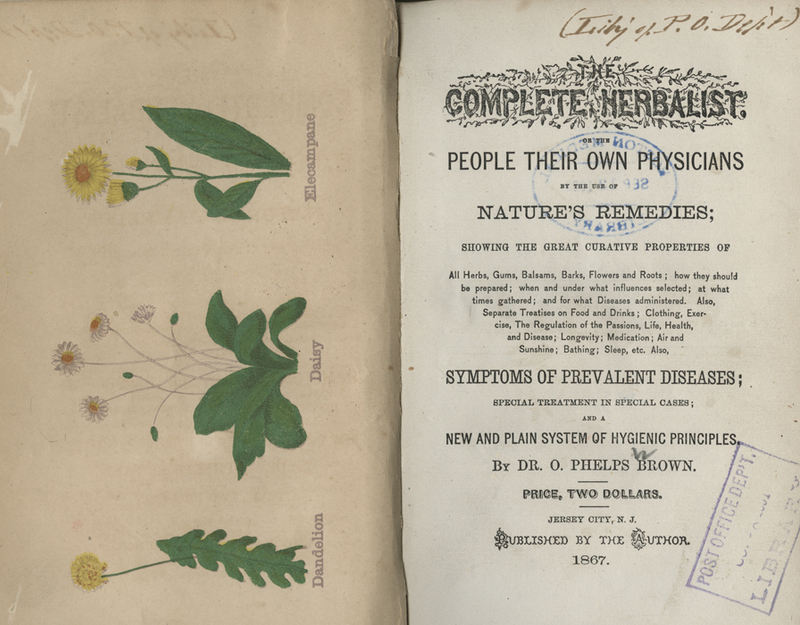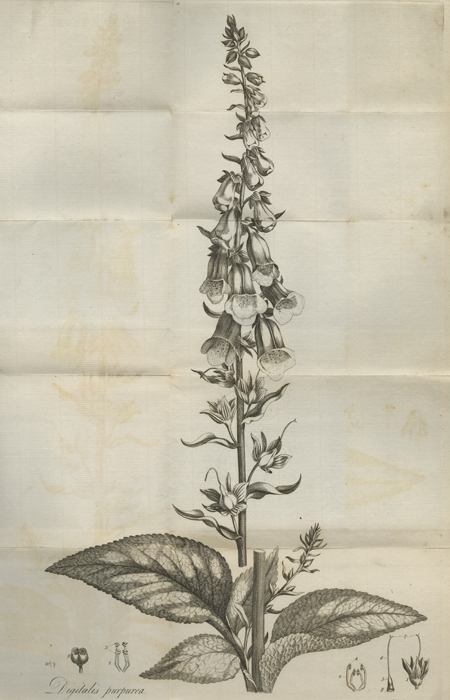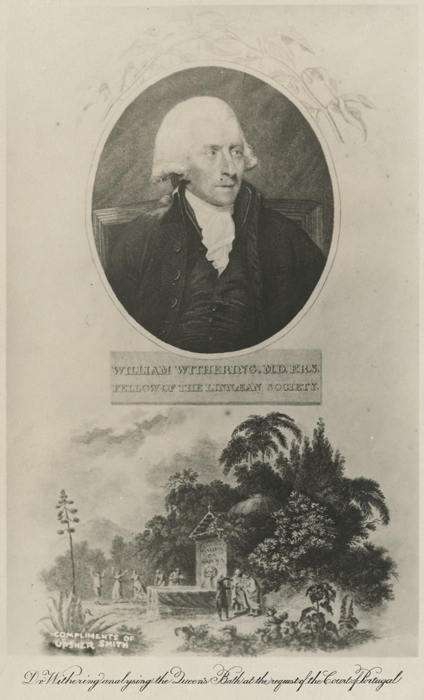Botanical Medicine
Herbals are the original foundation for botanical medicine. The somewhat erratic English botanist John Gerard here provides descriptions of over 1,500 plants, accompanied by detailed engravings, and then outlines the "vertues" or medicinal uses of each, with reference to Classical authorities, such as Galen and Dioscorides.
In addition to publishing this popular botanic medical text, O. Phelps Brown made and marketed proprietary medicines, such as the "Magic Assimilant" (boneset, chamomile blossoms, smartweed, vervain, and whiskey) for fits and indigestion. He also provided medical consultation by mail: "I desire all invalids to explain in full the symptoms under which they have suffered, and to detail as nearly as they can, when and how the disease was contracted…. I make no charge for consultation, either in office, or by letter. Express and mail facilities are now so perfect that medicines can be daily, safely and cheaply transported from my office to the remotest localities."
Although the use of extracts from the foxglove in cases of dropsy had been common, William Withering was the first to analyze preparations of the plant scientifically and so isolated digitalis. Withering's An account of the foxglove describes over 150 cases in which he administered digitalis and established safe dosages for use.
Some copies of William Withering's An account of the foxglove, and some of its medical uses come with a beautiful colored version of the above plate





